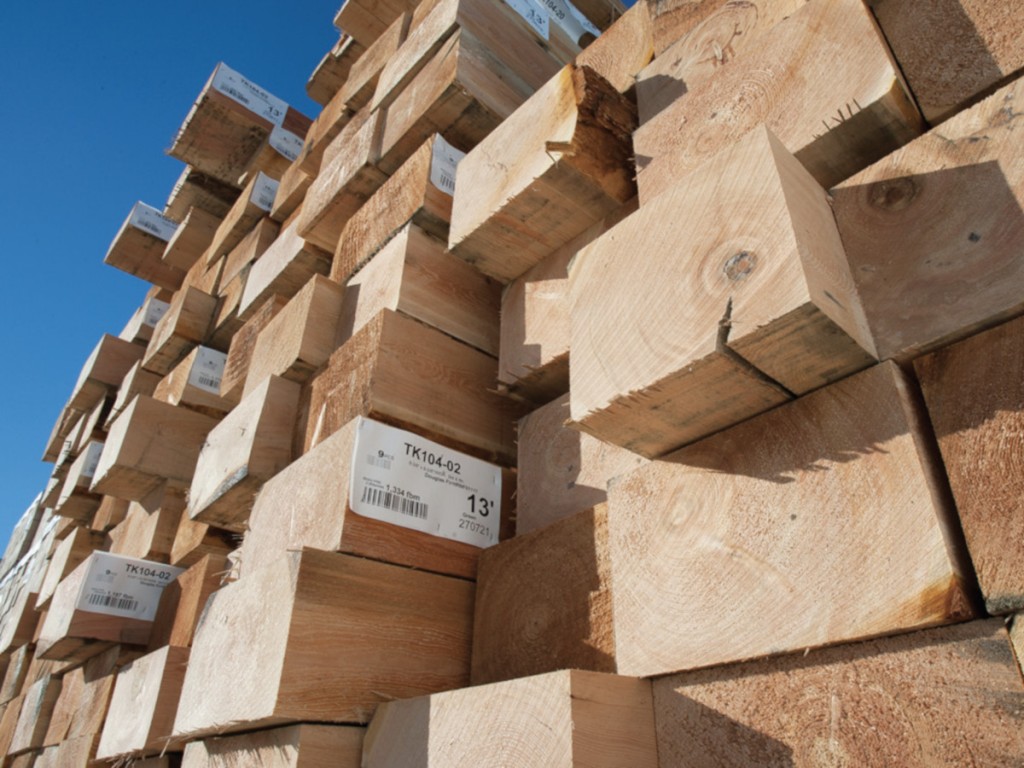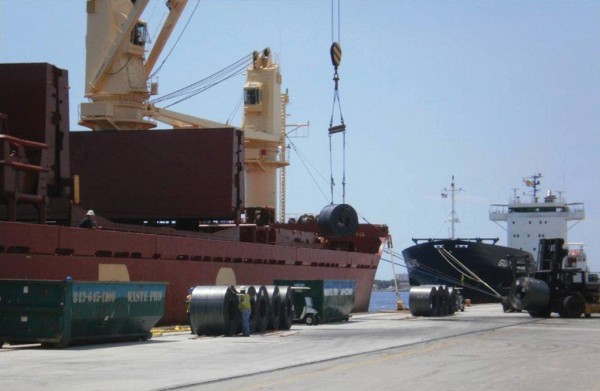Page 1: The Resurgence of Breakbulk
Page 2: Integrating Data for Multipurpose Cargo
The Resurgence of Breakbulk
The container industry has exploded since Malcolm McLean’s Ideal X first sailed in 1956. As ships got bigger, terminals kept pace, expanding their footprint to match the growing volume. The science of tracking and dispatching containers also kept pace, integrating electronic identification with the automated handling of ships and the positioning of boxes within the yard. But, just as you can’t fit round pegs into square holes, not all freight is suitable for containerization.
Commodities such as steel, lumber and bulk paper lend themselves to ships and terminals designed for loose freight. Project cargo such as wind turbines are often overweight and out of gauge. They require dedicated ships and yards to marshal and dispatch these units. The need for niche facilities has never gone away. In fact, it is on the rise.

Many breakbulk terminals today can be described as “special service providers.” They have a closer relationship with the cargo owners than traditional container ports. These facilities provide a range of services tailored to the handling of distinctive material both from the yard and warehouse perspective and the loading and unloading of the specialized ships which carry these cargos.
Many stevedores see the value of this unique market. Ports America, for example, currently operates 27 break-bulk terminals around the country. Some as standalone facilities or as part of a larger port complex, others in cooperation with additional operators such as Cooper T Smith and Delaware River Stevedores. Metro Ports operates 15 facilities from the Great Lakes, South Atlantic, and Gulf through the West Coast and Canada. So how can automation be applied to this type of cargo? To answer this question, we need to start at the beginning of the data stream.
SCADA - Gathering Hard Data
The nature of breakbulk is that each load is different. Different quantities, delivery schedules, and specific steps to handle a particular lot according to the situation. As much as this is true, certain parameters remain the same. Individual units or lots can be tagged and measured. Dwell time can be recorded and analyzed. We simply need to go to the grassroots of record keeping.
In the 1950s the first industrial computers supervised the manufacturing and monitored the data which was generated: counting parts on an assembly line, timing the completion of a manufacturing process, looking for errors in production. By 1960 computer engineers had developed the ability to monitor field data across remote sites and by the 1970s, microprocessors automated the manufacturing process and provided access to data across work platforms from the factory to inventory, stocking, and distribution. Supervisory control and data acquisition (SCADA) had come of age.
Applying the same principles of data collection and transmission, allowed container terminals to begin automating receiving, loading and discharge operations. With unitized cargo, this was not much of a stretch.
Integrating Data for Multipurpose Cargo
The TBA Group has developed software to solve this complex task. Glynn Thomas, Sales Consultant for the group explains, “TBA Group’s CommTrac, Terminal Operating Software (TOS) for multipurpose terminals, enables terminal operators to plan, track and manage inventory, people and assets (manned/automated) across the terminal, or terminal network, in real-time. CommTrac provides the tools, control and management information to optimize operations.” This software allows the breakbulk operator to reduce risk, ensure compliance and maximize growth potential and profitability. According to TBA Group, “CommTrac is configurable to the requirements of the end-user and can manage all commodities and storage types.”
According to Thomas, this would include Steel (bars, beams, and coils), Timber (as boards, logs, or palletized), Paper (rolls or pulp), Bulk type commodities (loose, in bags) and all other types of unitized cargo. Profitability is increased by reducing demurrage through higher equipment utilization, reducing pilferage and waste. Administrative costs are reduced by increasing operational efficiency and higher throughput. This integrated software allows for the capture of all billable activity around the terminal and reduces cargo claims caused by loss and contamination.

“…CommTrac’s strength is in its ability to integrate with 3rd party software, such as ERP (Enterprise Resource Planning) for finance, PLC (Programmable Logic Controllers) and SCADA for automation, RFID for locations or weighbridge integration for real-time inventory management. This integration allows stakeholders to be proactive in their decision making with real-time information at hand.” Thomas went on to explain, “Inventory can be easily tracked with CommTrac for unitized cargo, utilizing handheld bar code scanners, and for bulk commodities, via weighbridge, belt scale or weigh hoppers. This gives the operators, management, and customers an accurate real-time view of their inventory and respective storage locations. The web-based application allows devices with a web browser and correct permission …access to the system”. Thomas continued, “Not only does this facilitate direct access for ‘on the ground’ operators, it also allows customers, and agents, access to key information around vessel progress, inventory, collections and deliveries via the TOS.”
Challenges Facing Breakbulk Automation
While TBA Group continues to make progress in digitizing cargo handling, they also recognize the challenges inherent in this process. Digital conversion of manual records is required for large amounts of data involving the terminal and ship, across many IT platforms.
A calculation of service costs must be adopted between multiple levels of cargo movement, connecting the ship to the terminal, or within the warehouse and yard and with the gating of cargo in or out of the facility. To add to this challenge, many breakbulk terminals have smaller operating budgets than their sisters in the container world. Will breakbulk facilities find it economical to digitize operations? With smaller footprints, the need to automate may not seem necessary if throughput inventories remain fairly constant.
Finally, as breakbulk facilities continue to develop closer ties to their cargo owners, will there be any need to adopt higher levels of inventory control? This may be especially true in the movement of certain types of logs and lumber or where project managers have a firm handle on what is moving through a particular facility. Raw material makes up a good portion of the breakbulk cargo. When overseas markets heat up and cargo is plentiful, terminals that can deliver on the value-added service inherent in digitized terminal operating systems may win a larger market share among competing facilities.



